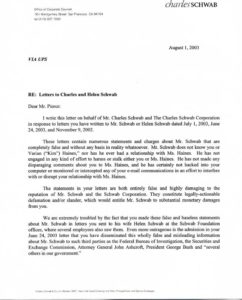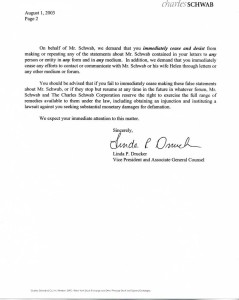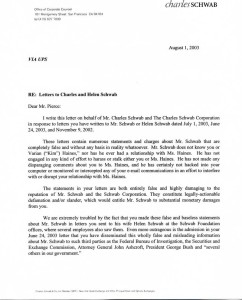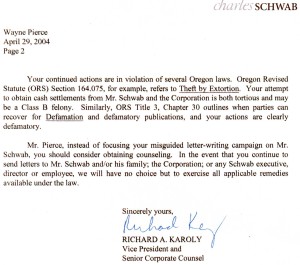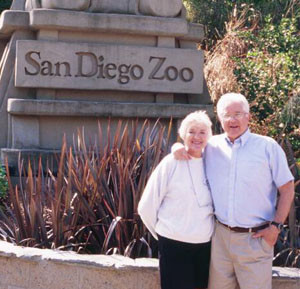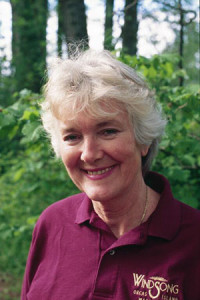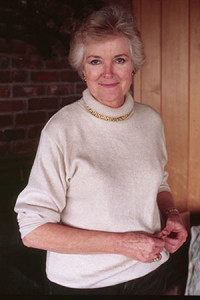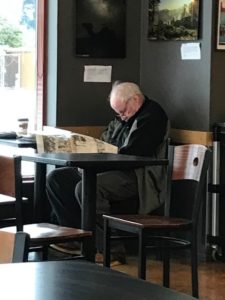June 16, 2015
From Horse Stable to IBM
My father was a restless man whose determination to provide for his family led to several careers and just as many bankruptcies. His pursuit of job opportunities resulted in numerous relocations requiring my sisters and I to change schools in the middle of the year. My father finally settled into a plumbing career and became a plumbing contractor in California’s greater San Jose area.
While I was still a boy we lived in Laton, a small farm town in California’s San Joaquin Valley. There was one barber and two small grocery stores. My grandfather was justice of the Peace and my grandmother was a teacher at our one grammar school. One of the most popular people in Laton was Homer, an old cowboy who kept horses in corrals in his backyard. Homer dressed in jeans, cowboy shirt, boots, and a straw hat. He didn’t have a car, so rode his horses into town where he created lots of excitement amongst us kids. Our greatest treat was when he selected one of us to pull up behind him on his horse for a ride. After moving to San Jose we often returned to visit my grandparents, which provided opportunities to walk across town looking for Homer.
When I was sixteen our frequent moves and constant school changes had taken its toll and I had become disillusioned about my education and future. After my grandfather died, my grandmother, who never drove, sold me his green ’35 Ford for $50 and my first adventure was to drive it one hundred fifty miles home to San Jose. Having my own car gave me a new sense of freedom and independence. It also nurtured a desire to be on my own.
A couple months later I drove to Laton to visit my grandparents and Homer. While there I made a bold move and asked Homer if I could come live with him and help with his horses. He liked the idea and said he would pay me a percentage of money he made with the horses. He said I could sleep on his sofa and eat with him.
Homer led a primitive life. His home was a small wooden house with one bedroom, small living room, and a tiny eat-in kitchen. He cooked on a hotplate that sat on the table. Washing clothes entailed hanging his clothes on the line and hosing them off with the garden hose. Bathroom facilities were located in an unheated shed behind the house and consisted of a large open room with a toilet and laundry tray where I soon learned Homer took his standup baths. I had the luxury of bathing and doing my laundry at my grandparent’s place.
I enjoyed working with the horses, but Homer couldn’t keep me busy and I was often broke and hungry. I also missed my family and friends, so one day returned to San Jose to look for a job at a riding stable.
I first visited the county fairgrounds where owners sometimes boarded and trained their horses. I met a top American Saddlebred horse trainer working for several wealthy families. He and others were living in horse stalls that they had converted into cozy one-room abodes. I also met poor families with kids living there. The fairground provided bathrooms, but no eating facilities. When it came to monthly rent it didn’t get any better. My new friend offered me part-time work helping him training horses and riders, so I rented a horse stall and returned to Laton to fetch my few belongings.
On move-in day I bought a cot and a couple blankets. I used a wooden fruit box for my nightstand and hammered a few large nails in the wall for hanging my clothes. At seventeen I was independent and free and could not have been happier. I spent my days feeding, grooming, and cleaning up after the horses, whose homes were near mine. I also assisted with horse training. On occasion I accompanied horses to shows at the Cow Palace in San Francisco where their owners would show them. I was learning a lot about horse training and English style riding, but the work was part-time and I was still often broke and hungry. So I again decided to look for a better job.
Without benefit of a computer and Internet, I started searching for riding stables in the San Jose area and found one whose owner was impressed by my experience with American Saddlebreds. He hired me and I was soon teaching large English equitation classes to girls from a nearby Catholic girl’s school. I can still recall standing in the middle of the riding ring trying to keep control of fifteen or twenty giggling girls, many who had never been on a horse. Of course, these classes require very special horses.
The health and happiness of horses is totally dependent upon their owners and those who care for them. Feeding is the greatest expense and when times are tough or owners are greedy, rations get cut. After working with him for a while, I felt my boss was not a horse lover and the stable was just a way of making money. I loved horses and was bothered that our school horses were not fed properly and appeared thin, lethargic, and unhappy. Lots of rich families boarded their horses at our stable and of course their horses received better care.
Though I was well below her status in life, one girl whose family had several horses at our stable had a crush on me and we started dating. At the time, it didn’t occur to me how strange it might appear having my old green ’35 Ford driving into her upscale neighborhood and park in front of her parents’ two-story home. Her parents were not happy with their daughter’s selection of a boyfriend and put an end to my intrusion into their life by sending their daughter off to Castilleja girl’s school, strategically located near Stanford University. Being forced to please her parents’ desire that she marry well, she was no longer allowed to see me. Her parents told my boss and he followed up by chewing my ass because I had been dating one his clients’ daughters. This was my first experience with the real world where money and class play a great role. I was devastated and did not know what to say, so kept it simple and told my boss I quit. Her parents’ strategy didn’t work and their daughter ended up marrying an electrical contractor’s son, who, it was said, got the postmaster’s lovely daughter pregnant while in high school. Perhaps they figured that having a promiscuous electrician for a son-in-law was a step up from having a plumber’s son around on holidays.
I started working for individual horse owners and a woman I was working for in Los Altos Hills suggested I check out Menlo Circus Club, which she said had a large horse stable and training facilities. I went there and discovered the club was located in Atherton, one of California’s most prestigious neighborhoods with many large mansions. The club was beautiful. As I pulled into the long driveway I saw a field where men were playing polo. In the center was the main clubhouse and on the right was the largest horse stable I had ever seen. I introduced myself to two men who ran the stable and after we chatted for a while about my experience they offered me a job as an English and western riding instructor. As with my previous job, we provided riding lessons for a nearby Catholic girl’s school, also strategically located by Stanford University. Some of my private lessons were with kids from nearby wealthy families. One student’s father was the owner of Spivey’s drive in restaurants and brought his son for his lessons in a shiny black Rolls Royce. Dad would sit in the stands reading the paper while I taught his reluctant son to ride.
One day after a large group lesson my boss met me by the riding ring and said he wanted to talk with me. He said, “Wayne, this isn’t the life for you. You are young and bright and should be working for one of the electronic companies that are starting up around here.” He was referring to companies that were locating in the area that would become Silicone Valley. “Working for one of these big companies, you’ll make a lot more money. You’ll have benefits and will be able to retire with a pension.” He was talking about things I had never thought about before. I was a bit dumfounded because I loved working with horses. I loved the stable life and the black “stable boys” I worked with—some who were retired jockeys or hadn’t made it at the track. I really didn’t know how to respond, but told him I would think about it.
I didn’t know much about these companies my boss was talking about. Names like Hewlett Packard, Xerox, Varian Associates, and IBM didn’t mean much to me. For sure, I knew very little about electronics. But I respected my boss and decided to follow his advice. In my free time I started dropping by large companies and picking up application forms. When I reached the sections about education and work experience I was embarrassed; all I could say was that I had one year of high school and four years working with horses. This was no doubt what my girlfriend’s parents were worried about. I did not know what type work these companies performed so had no idea how I might fit in even if I were offered a job.
I didn’t have to worry about it because the responses were quick and the same; they did not have job openings that required my skills. Even though I had little desire to work for these companies, it bothered me that I was being rejected. This was my first encounter with being judged based upon my education and work experience and it would be another lesson about the real world. This was all new for me and I felt vulnerable and bothered enough to talk with my father about it. It really wasn’t complicated. I just told him the large companies would not hire me because of my lack of education and experience. My father listened and was sympathetic, but didn’t have much advice. He passed up the opportunity to invite me to come back home and live with him and my mother while going back to school. Thinking about it years later, even though he was a plumbing contractor, he didn’t suggest I work for him and learn the plumbing trade.
The disappointment of not being hired was minimal because I was happy and contented working with horses. I had almost forgotten about it when my father called to tell me he had been doing plumbing for a man who worked for a company called IBM. When he told his customer about my difficulties finding a job, the man told him to have me call him. The man’s name was Rey Johnson.
Mr. Johnson invited me to his downtown office where he talked with me for what seemed a very long time. He was patient and methodical as he asked questions, starting with my childhood. He listened carefully and took meticulous notes. By the time he finished asking questions, I was exhausted. He wrote down the address and phone number of IBM’s new manufacturing plant on Cottle Road and told me to call the Personnel Department and make an appointment for a job interview.
IBM’s new plant was located in south San Jose and consisted of large buildings sprawled out in the middle of a huge prune orchard. It was a beautiful site, but I did not have any idea what might be going on in those buildings. I followed the signs to the Personnel Department where I parked. It was 1957 and I didn’t realize how my recently acquired 1941 Plymouth would stand out among the newer cars. I had dressed for the occasion in my red sweater, blue wool slacks, and white buck shoes.
I was interviewed by John DelFavero who explained that his department manufactured magnetic disks, which of course didn’t meant anything to me. When he showed me a piece of paper with drawings of small round circles, I smiled and told him it sounded interesting. I would later learn that these sketches represented the large magnetic disks used with IBM’s mainframe computers. When he asked if I was interested in working for him, I said yes and he told me to report to work the following Monday, thus launching my thirty-six year career at IBM. I would later learn that DelFavero was a Stanford University Mechanical engineer. After a few years at IBM, he left to become the president of the Curry Company that was managing Yosemite Village and concessions in Yosemite National Park.
Through hard work and continuing education, I made steady progress at IBM, spending about half my career in management positions. It would not be until many years later that I learned that the first man at IBM to interview me was the famous computer pioneer, Reynold B Johnson, also known as the “father” of the disk drive. IBM’s CEO Tom Watson, Jr. had chosen Johnson to set up the west coast laboratory where the magnetic disks and heads would be developed. IBM’s San Jose manufacturing plant would then manufacture the disk drives for IBM’s mainframe computers. On a miniature scale, Johnson’s technology is still used in most of our personal computers. Now and then I think about the time when this well-educated computer genius and manager of the development lab took the time to talk with me and offer me this life changing opportunity. Had Rey Johnson not been experiencing plumbing problems and called my father, I would probably have spent my life working with horses. At the time Johnson interviewed me, he was fifty-one and I was twenty.
After retiring from IBM in 1993, I wrote to Tom Watson, Jr., IBM’s founder’s son, and thanked him for my many years with the company. Older now and long retired, he took the time to write and thank me for writing and reminding him of some exciting moments, such as when he gave Russia’s Nikita Khrushchev a tour of our new San Jose plant. I had been invited to join the Russian entourage for lunch in our cafeteria and sat near the front where both men made speeches. The highlight of Khrushchev’s speech was when he told the packed cafeteria how much he enjoyed our fried chicken. Tom Watson died only months after he had written to me. Now and then I am reminded of the great men who spent their lives making America a great country. How sad that we must now watch helplessly while the vultures destroy America and what these men created.
